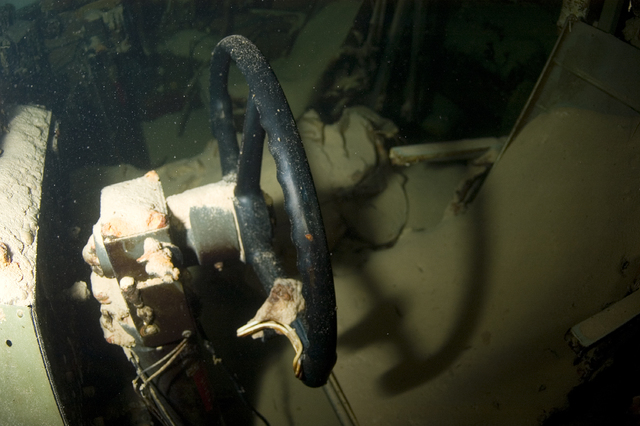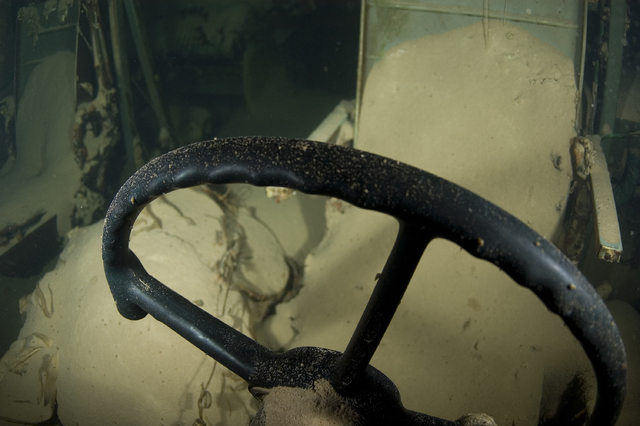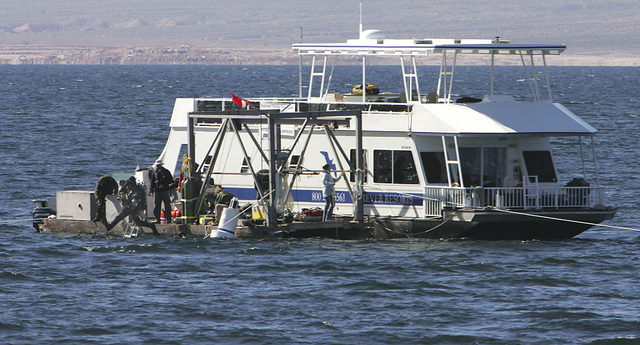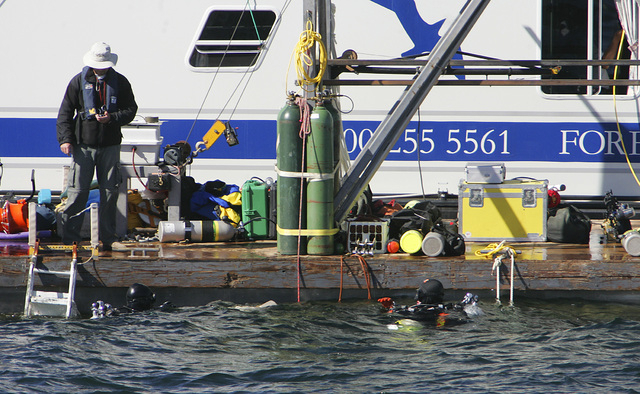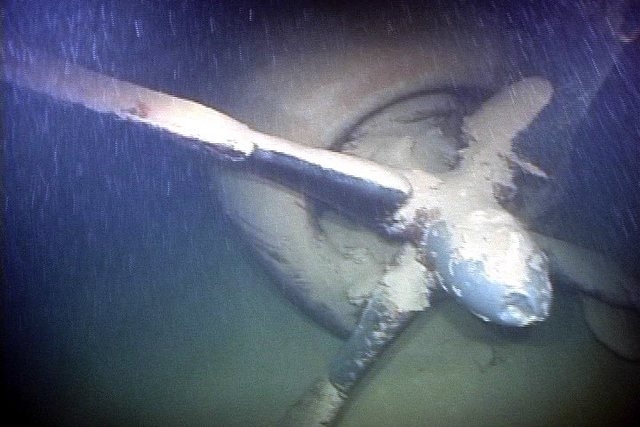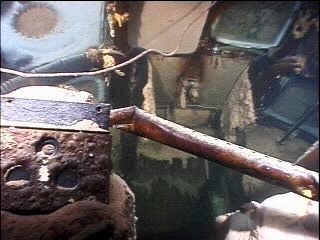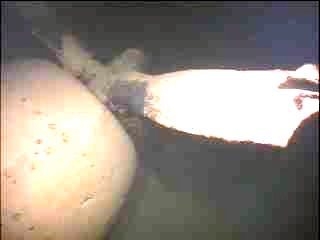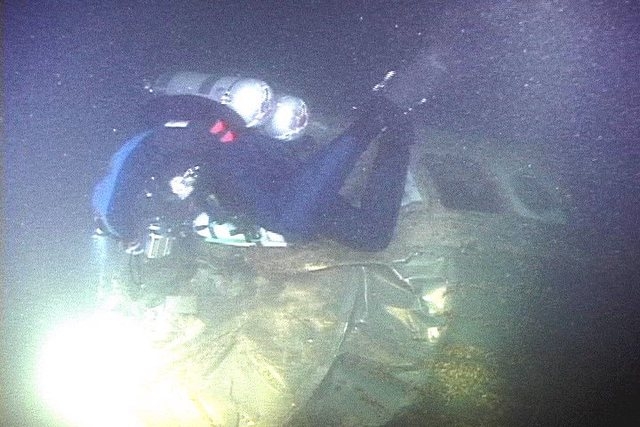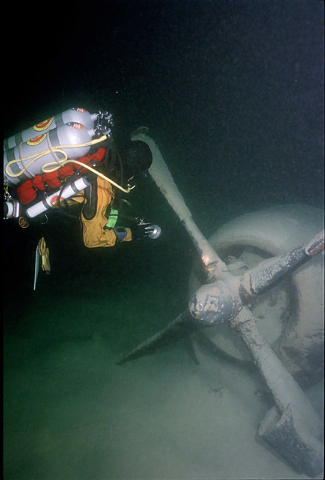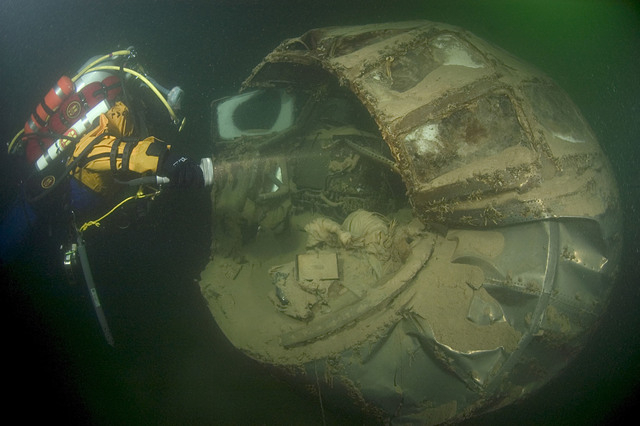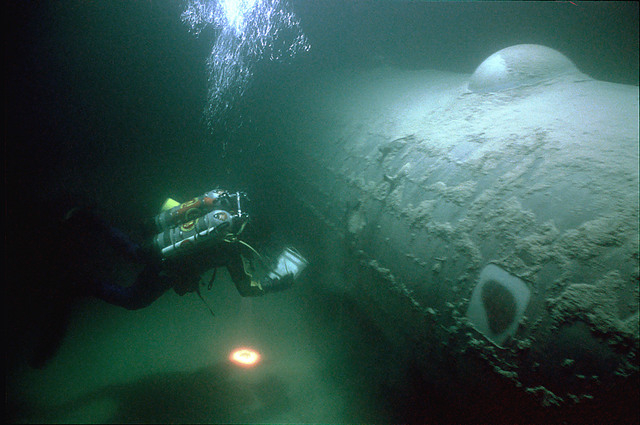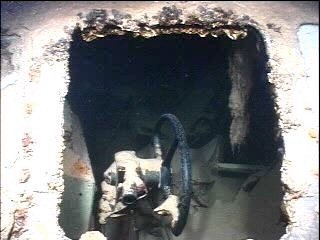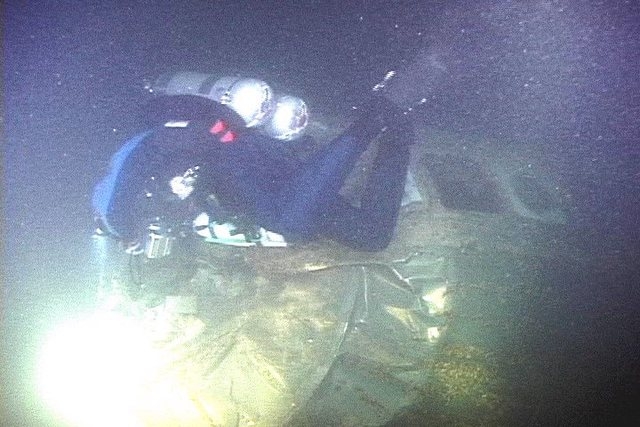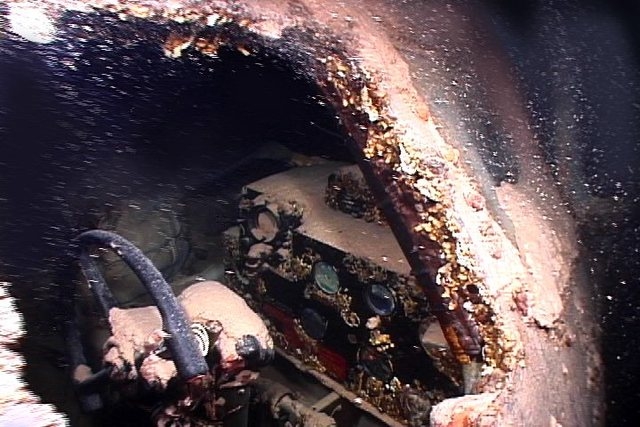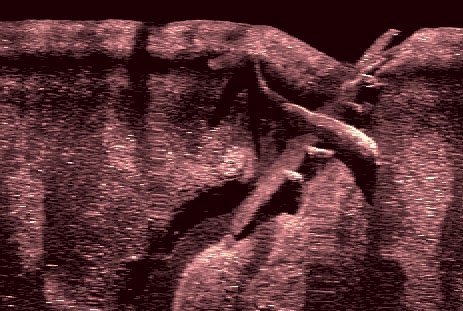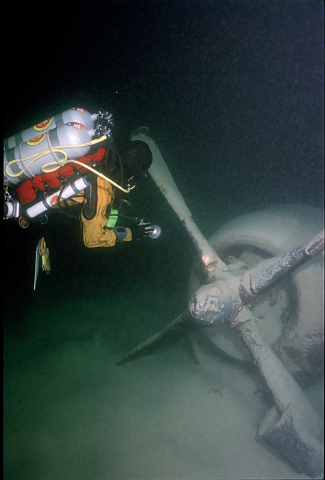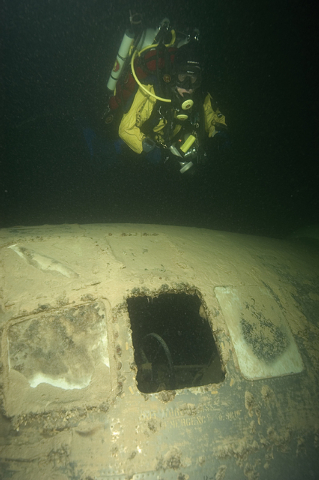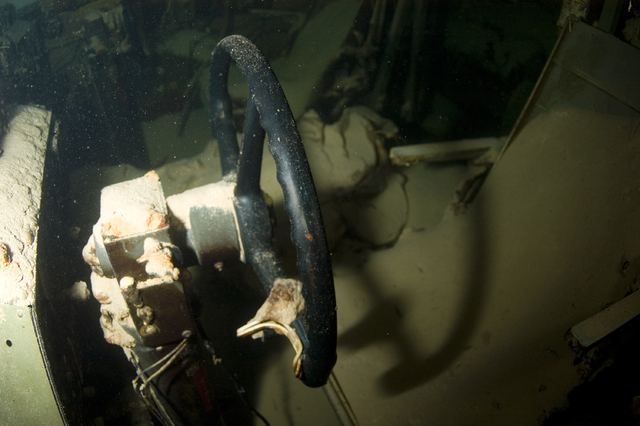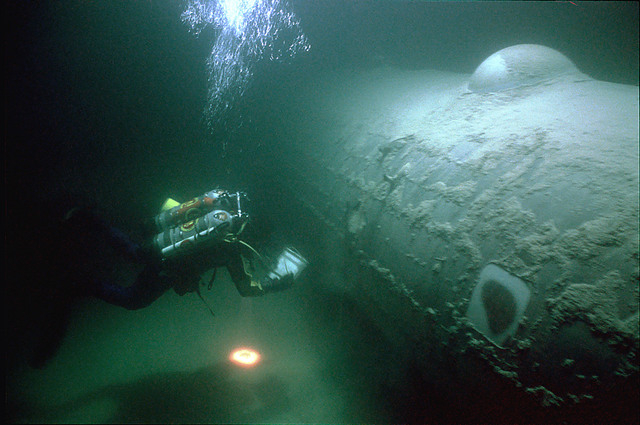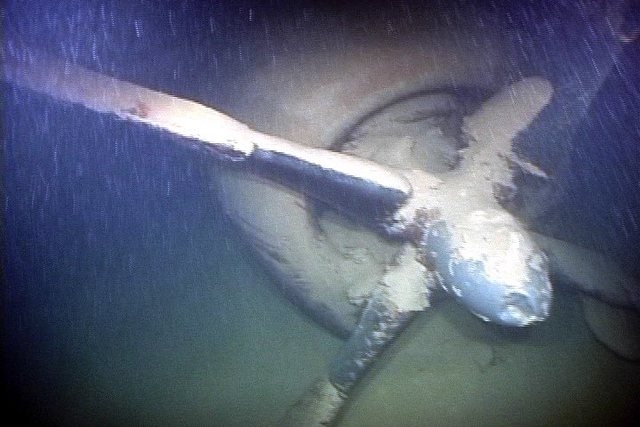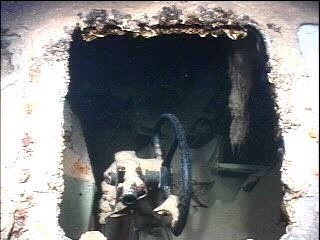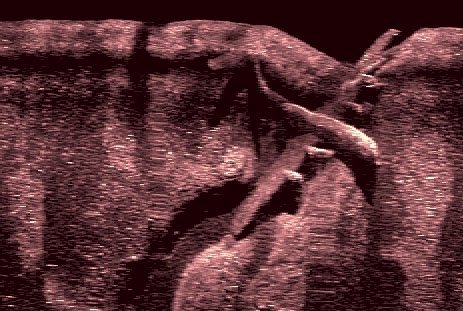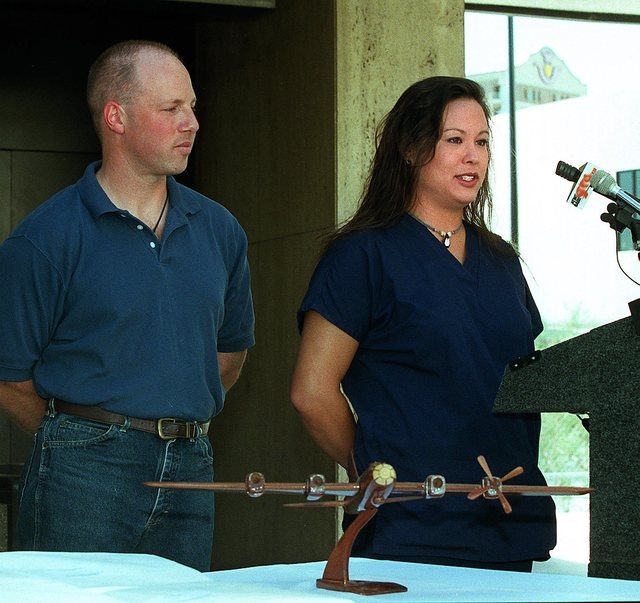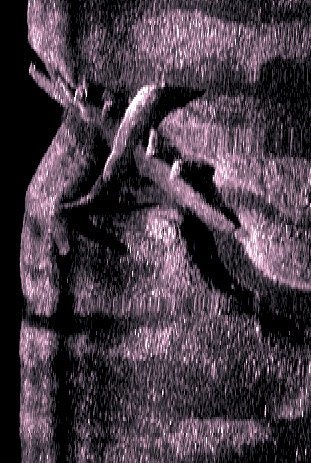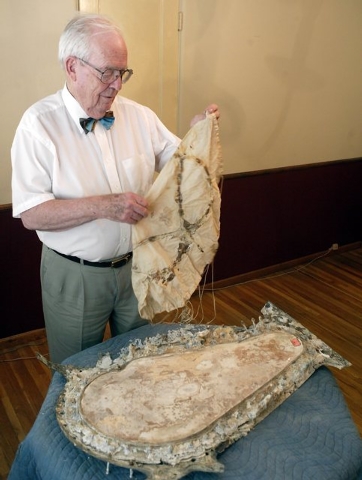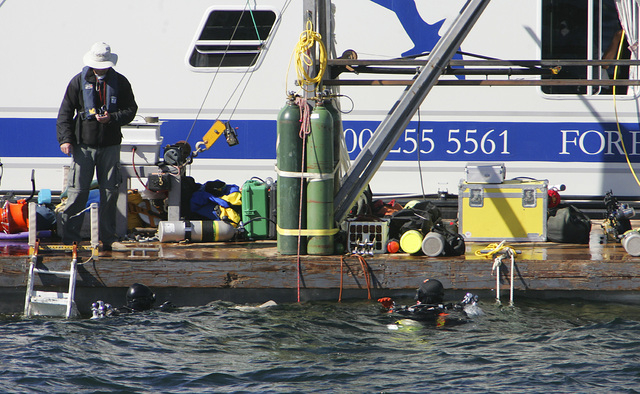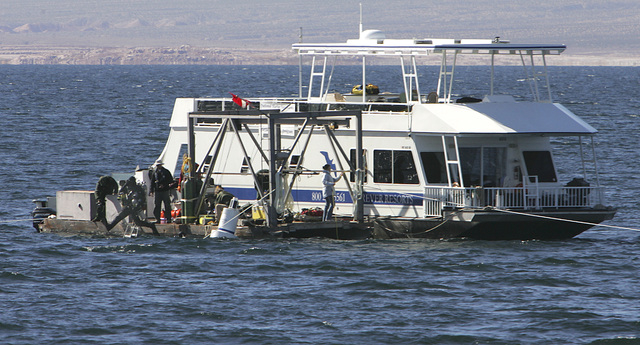Lake Mead to allow dives to wreckage of WWII bomber — PHOTOS
As early as this summer, divers could once again have the chance to explore the wreckage of a World War II-era bomber at the bottom of Lake Mead.
The National Park Service announced Thursday it will accept bids from dive companies interested in taking people on guided tours of the 66-year-old B-29 wreckage, which has been closed to divers since 2009.
Record low water levels have brought the sunken Superfortress within reach of recreational divers for the first time ever, and the aircraft will only get easier to reach as the reservoir continues to shrink.
According to the National Oceanographic and Atmospheric Administration, the B-29 was one of the last built and was delivered to the U.S. Army eleven days after the end of World War II. Stripped of armaments, it became a post-war reconnaissance plane used in an upper atmospheric research program based at Muroc Army Airfield in California.
“Part of this research was focused on the development of a device that used the sun as a point of reference to guide missiles as they arched from the United States towards the Soviet Union,” NOAA said.
On July 21, 1948, the plane was being flown on a mission to test a secret missile guidance system. While descending over the smooth-as-glass lake, the pilot lost depth perception and flew the bomber into the water at 230 mph. It skipped once, settled onto the surface and sank. All five crew members survived, but the bomber was lost until August 2001, when a team of local divers discovered it sitting upright and mostly intact on the lake bottom.
In 2003, archaeologists from the Park Service’s Submerged Resources Center mapped and documented the wreck. Five years later, the Park Service awarded one-year permits to two companies — one from Lake Havasu City, Ariz., and the other from Ventura, Calif. — for guided technical dives at the site, then at a depth of roughly 160 feet. Technical dives exceed 130 feet in depth and require more training and equipment than more common and less hazardous recreational scuba dives at lesser depths.
Christie Vanover, spokeswoman for the Lake Mead National Recreation Area, said those first two permits were not renewed in 2009 because the companies struggled to turn a profit under the restrictions placed on them.
The Park Service is now offering what it hopes is a more enticing deal: a two-year, commercial-use permit allowing up to 100 divers a year at the B-29 wreck and unlimited scuba instruction and charter dives to other “submerged resources” in the Lake Mead National Recreation Area.
Vanover said the Park Service hopes to issue two of the permits by April and see visits to the B-29 resume by summer.
“We have had people express an interest over the years. We think this is the best option, and it provides a business opportunity,” she said. “We hope to see multiple applications.”
The wreckage now rests under roughly 110 feet of water in the Overton Arm, at the northern end of the lake. The Park Service won’t give the precise location or depth because the site is considered a “protected resource.”
Steve Schafer knows exactly where the bomber is. He has dived the site dozens of times, including as a guide back when the park was allowing properly trained and equipped tourists to make the trip in 2008.
Back then, Schafer said, it was “an intermediate technical dive” that allowed about 30-45 minutes at the bottom but required as much as an hour of decompression on the way back to the surface.
His most recent visit to the bomber came a year ago, when his company, Earth Resource Group, checked on the wreckage under a scientific permit.
He said the aircraft seems to have deteriorated somewhat over the past decade, going from a “gleaming wreck” to one now layered in silt and covered with invasive quagga mussels. “They’re on every metal surface,” Schafer said of the quaggas. “Those little buggers are just all over the place.”
But at 99 feet long with a wingspan of 140 feet, the aircraft is still an impressive sight. Schafer said the instruments are still visible through the wrecked cockpit windows, as are oxygen tanks, tool kits and an open parachute.
“It’s still a great wreck to see,” he said. “You definitely know it’s a B-29. It’s hard to miss.”
It’s not the only large aircraft at the bottom of the lake, either.
On Oct. 24, 1949, a civilian-owned PBY-5A Catalina flying boat crashed in the lake’s Boulder Basin while practicing water landings. Four of the five people on board were killed.
In 2007, the National Park Service revealed the location of the somewhat scattered wreckage, allowing people to dive there without a permit.
But recreational divers are still out of luck. Schafer said the aircraft is deeper than the B-29. Even with the lake at historic lows, it’s still more than 150 feet deep, requiring a technical dive.
Something else to remember, Vanover said: Both planes are considered archaeological sites — and the Catalina may still hold human remains — so removing anything from the wrecks is prohibited by federal law.
Permit applications for B-29 tour operators are available online at www.nps.gov/lake/parknews/b-29-permit.htm. The deadline to apply is 4 p.m. on Jan. 23.
Contact Henry Brean at hbrean@reviewjournal.com or 702-383-0350. Follow @RefriedBrean on Twitter.



